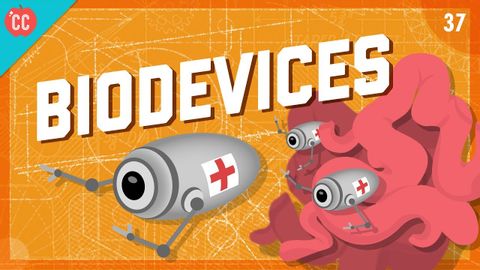
Subtitles & vocabulary
Smart Tattoos & Tiny Robots: Crash Course Engineering #37
00
林宜悉 posted on 2020/03/30Save
Video vocabulary
process
US /ˈprɑsˌɛs, ˈproˌsɛs/
・
UK /prə'ses/
- Transitive Verb
- To organize and use data in a computer
- To deal with official forms in the way required
- Noun (Countable/Uncountable)
- Dealing with official forms in the way required
- Set of changes that occur slowly and naturally
A2TOEIC
More spot
US /spɑt/
・
UK /spɒt/
- Noun
- A certain place or area
- A difficult time; awkward situation
- Transitive Verb
- To see someone or something by chance
A2TOEIC
More complex
US /kəmˈplɛks, ˈkɑmˌplɛks/
・
UK /'kɒmpleks/
- Countable Noun
- Group of buildings all used for the same purpose
- Adjective
- Not being simple; having many parts or aspects
A2
More environment
US /ɛnˈvaɪrənmənt, -ˈvaɪən-/
・
UK /ɪn'vaɪrənmənt/
- Noun (Countable/Uncountable)
- Natural world in which plants and animals live
- The entire surrounding conditions of something
A1TOEIC
More Use Energy
Unlock All Vocabulary
Unlock pronunciation, explanations, and filters
